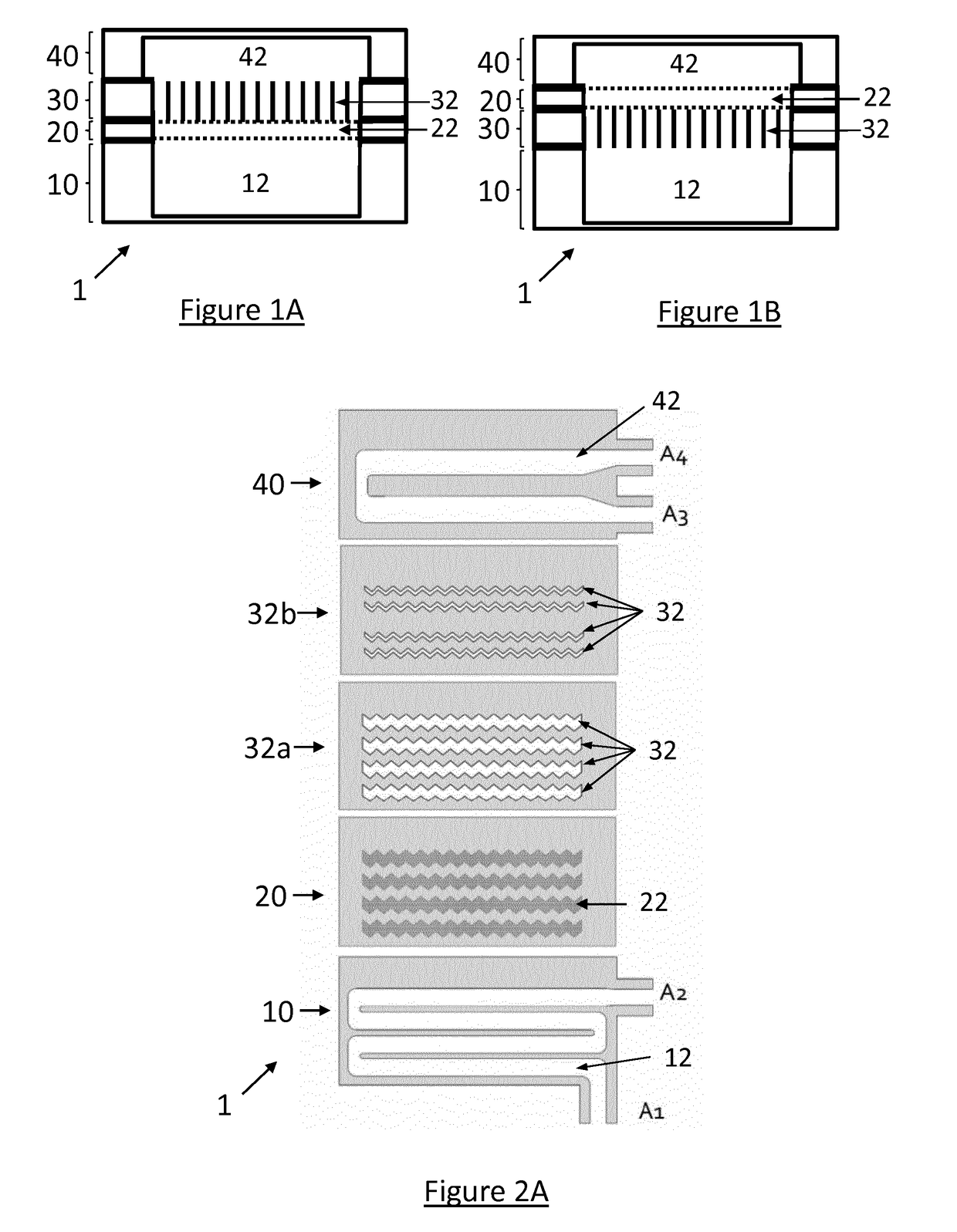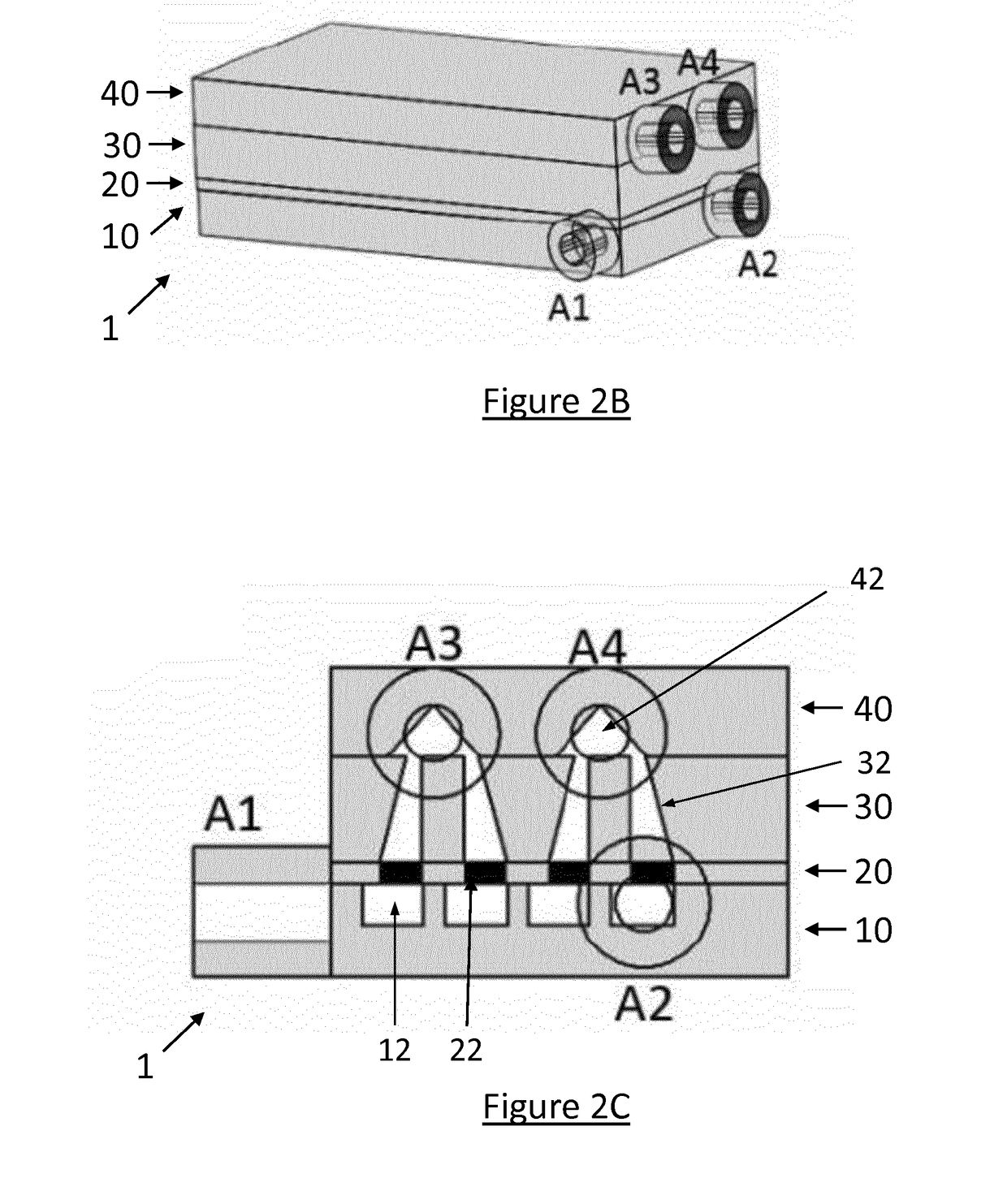Medical Device For The Selective Separation Of A Biological Sample
a biological sample and selective separation technology, applied in the field of medical devices and biological sample separation methods, can solve the problems of inability to sort the most fertile sperm from the sample, inability to perform in vitro and particularly inability to achieve in vitro and in situ treatment of infertility, etc., to achieve efficient separation or enrichment, reduce separation and/or preparation time, and optimal
- Summary
- Abstract
- Description
- Claims
- Application Information
AI Technical Summary
Benefits of technology
Problems solved by technology
Method used
Image
Examples
Embodiment Construction
[0090]In FIG. 1A, a medical device 1 is depicted for the selective separation of a biological sample of a mammal into a first portion and a second portion. The medical device 1 generally comprises four layers. The bottom layer 10 comprises a first reservoir 12 for receiving the biological sample. As depicted in FIG. 1, the first reservoir 12 may comprise the majority of the first layer 10 and furthermore is in fluid communication with the fourth layer 20 as indicated by the dashed line. However, other configurations, e.g. a larger first layer relative to the first reservoir, may be provided for e.g. stability and handling purposes.
[0091]The fourth layer 20 comprises a separation layer 22, which preferably comprises a porous structure, i.e. allowing compounds with a certain size or molecular mass to pass through the porous structure to the third layer 30. For example, the fourth layer may be a cellulose-based membrane, comprising pores which are large enough for spermatozoa to pass t...
PUM
 Login to View More
Login to View More Abstract
Description
Claims
Application Information
 Login to View More
Login to View More - R&D
- Intellectual Property
- Life Sciences
- Materials
- Tech Scout
- Unparalleled Data Quality
- Higher Quality Content
- 60% Fewer Hallucinations
Browse by: Latest US Patents, China's latest patents, Technical Efficacy Thesaurus, Application Domain, Technology Topic, Popular Technical Reports.
© 2025 PatSnap. All rights reserved.Legal|Privacy policy|Modern Slavery Act Transparency Statement|Sitemap|About US| Contact US: help@patsnap.com



